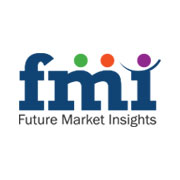Foods are fortified with vitamins and minerals in order to make it more nutritious. There are many types of food fortification such as mass fortification which is mandated by the govt.; targeted fortification for instance fortification in biscuits in order to reduce malnutrition among the school students in South Africa; market driven fortification is totally based on the commercial companies performance and activities over fortified foods according to the market demand; bio-fortification where foods such as fruits and vegetables are injected or fortified and house hold and other commercial food fortification, where food is prepared specially for children. The global fortified foods market is showing tremendous progress and also expected to witness highest growth during next five to six forecast years. Fortified foods enjoyed huge popularity among health conscious people. In developed countries it has large market share, in emerging economies it gaining popularity owing to increasing awareness. Food fortification is one of the strategies of World Health Organization (WHO) and Food and Agricultural Organization (FAO) to decrease the rate of malnutrition. There are other many organizations helping poor from the countries such as Nigeria, India by bridging the gap between nutritional and agriculture. North American, Western Europe and Japan are the target market for the fortified milk and milk producer companies which are the largest market share holder of fortified foods.
Browse Full Report@ http://www.futuremarketinsights.com/reports/fortified-food-market
Fortified food market segmentation:
On the basis of food types fortified food market is segmented into cereals and cereal based products, milk products, fats and oils, confectionaries, infant formulas and others includes tea. On the basis of basic nutrients the fortified food market is segmented into vitamin and minerals. Further vitamin and mineral segment is categorized by the ingredient of nutrition, for instance vitamin segment is sub segmented with vitamin A, vitamin D, Vitamin C and others, and minerals segment is sub segmented with iron, zinc, copper, iodine, Docosahexaenoic acid (DHA), selenium, folic acid and others.
Geographically fortified milk and milk market is segmented into North America, Latin America, Eastern Europe, Western Europe, Asia Pacific excluding Japan, Japan and Middle East & Africa.
Fortified Food Market Dynamics:
Health consciousness in developed countries is driving the market, moreover, enhancement of livelihood among the consumers of emerging economies set a new benchmark for fortified food market. Awareness is another driving factor that has high impact on Asia pacific and Middle East. The cost of fortified food is making the market restraint since the production of fortified food requires high expenditure. However, intensifying the economic stability among Asian countries builds huge opportunities for fortified food, also there is an opportunities over developed regions for instance North America and Japan that can be more penetrated in order to increase more market share.
Request Report Sample with TOC@
http://www.futuremarketinsights.com/reports/sample/rep-gb-941
Fortified Food Market Key Players:
Some the key players operating in fortified food market are Nestle SA, Kellogg Co., Dean Foods, Unilever, RFM CORPORATION and others.

